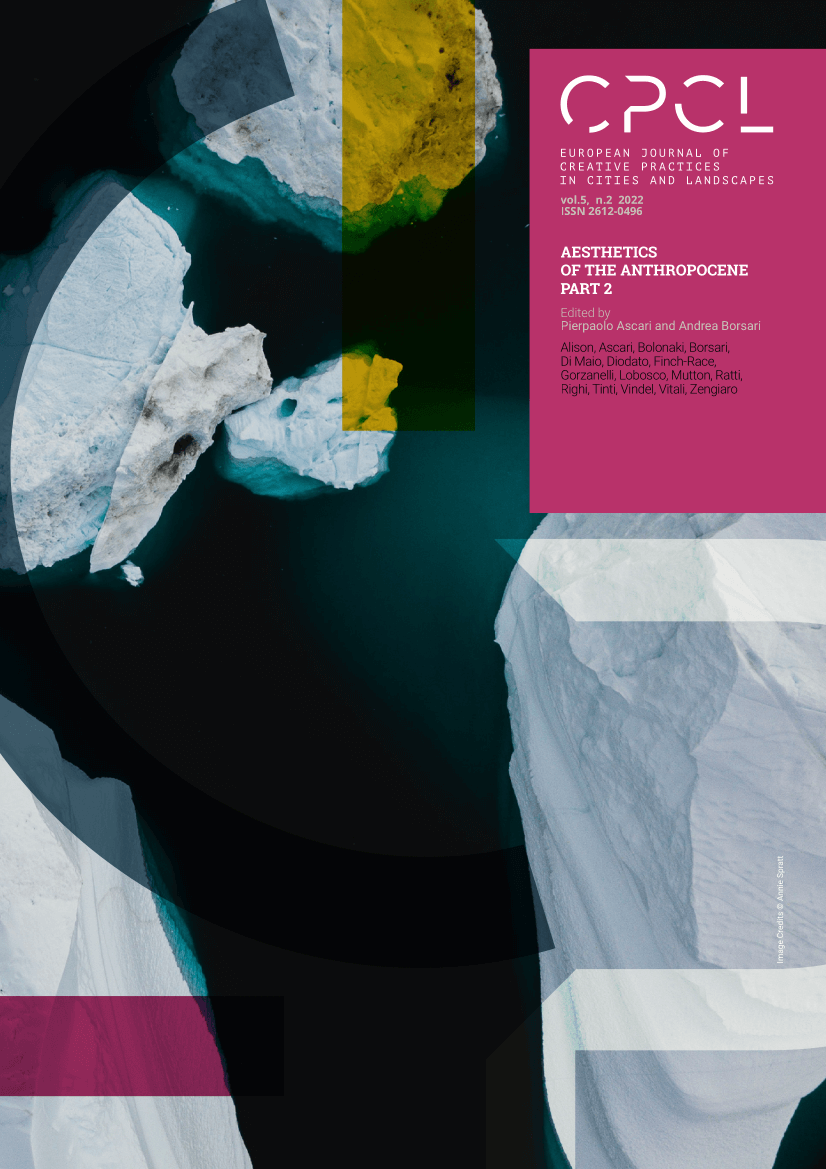“Nature that Takes Back it Spaces”: when Architecture Teaches how to Trace Roots. A Conversation with Carlo Ratti
DOI:
https://doi.org/10.6092/issn.2612-0496/15375Keywords:
Experience, Material imagination, Natural elements, Phenomenology, ArchitectureAbstract
Today, the definition of the Anthropocene is still very complex. Indeed, it isn't easy to illustrate a concept with many aspects. It is attractive, however, to understand how to interpret the human impact on the environment, and the concrete design of architecture can do so much to this end. In this contribution, I would offer an authentic and sensitive conversation with one of the most concrete architects on the international scene. I like to define Carlo Ratti as a "concrete" architect. Ratti's anthropocentric aspect is not only related to his design projects. His concept of the architectural project strongly represents the future part of the environmental system. How, more and more, the approach to the sensitivity and phenomenology of the present is the central aspect to be understood as a starting point to read future elements. In this regard, an architect creates a warning for the future generations who will inhabit the earth.
References
Alison, Aurosa. “Gaston Bachelard”, in International Lexicon of Aesthetics. Milano-Udine: Mimesis, Spring Edition, 2021.
———. Epistémologie et esthétique de l’espace chez Gaston Bachelard. Paris: Mimesis France, 2019.
———. “L’artidesign: il dialogo fruttuoso”, in Aisthesis, n° 13 – 1, (2020): 47-55.
Barison, Marcello. “L’Antropocene architettonico. Sulla formazione di mondo”, in, Aesthetica Preprint , n°114, (2020): 79-97.
Claudel, Matthew, Ratti, Carlo. The City of Tomorrow: Sensors, Networks, Hackers, and the Future of Urban Life. Yale: Yale University Press, 2016.
——— La città di domani. Come le reti stanno cambiando il futuro. Torino: Einaudi, 2017.
Bachelard, Gaston. Water and dreams. An Essay on the Imagination of Matter. Translated by. Frederick Farrell. Dallas: The Dallas Institute of Humanities and Culture, 1983.
———. Earth and Reveries of Will: An Essay on the Imagination of Matter. Translated by. Frederick Farrell. Dallas: The Dallas Institute of Humanities and Culture, 2002.
———. Earth and Reveries of Repose: An Essay on Images of Interiority. Translated by. Frederick Farrell. Dallas: The Dallas Institute of Humanities and Culture, 2011.
———. Poetics of Space. Translated by Maria Jolas. Boston: Beacon Press, 1994.
Gao, Yanping. “The symbolic force of rocks in the Chinese Imagination”, in Imagination and art: Explorations in Contemporary Theory, edited by Keith Moser and Ananta Ch. Shukla, London/ Boston: BRILL, 2020
Gasperoni, Lidia. “Antrhopocene”, in International Lexicon of Aesthetics. Milano-Udine: Mimesis, Spring Edition, 2022.
Gramsci, Antonio. Quaderni del carcere. Torino: Einaudi, 1975.
Huang, Kuan-Min. “Dwelling Together on Earth: An Ecological Consideration from Bachelard’s Cosmo-analysis”, in Bachelard Studies – Études Bachelardiennes – Studi Bachelardiani, n°1, (2020): 33-46.
Ratti, Carlo. Architettura Open Source. Torino: Einaudi, 2014.
Interviews:
Interview to Carlo Ratti di Marco Bassan, Futuro Antico Series, in “Artribune”, 23.03.2022, https://www.artribune.com/progettazione/architettura/2022/03/futuro-antico-intervista-carlo-ratti/ last visit: 09.08.2022.
Web Sites:
https://www.labiennale.org/it/architettura/2021/one-planet/cavebureau
Downloads
Published
How to Cite
Issue
Section
License
Copyright (c) 2022 Aurosa Alison

This work is licensed under a Creative Commons Attribution 4.0 International License.




